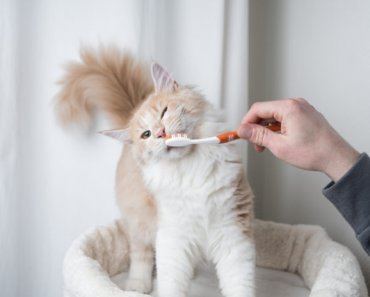Left unresolved, excessive fear in dogs causes emotional suffering and can even become dangerous. Here’s how acupressure, combined with help from your vet and a canine behaviorist, can help a fearful dog feel safer and calmer.
Fear is a necessary defense mechanism — a healthy reaction to any real or perceived threat to your dog’s survival. A timid dog might become frozen with fear or run and hide, while a more aggressive canine could lash out to ward off the frightening trigger. These “fight or flight” responses are normal reactions to threatening situations. However, they become a problem when they escalate beyond normal bounds and become harmful to the dog and those around her. Let’s look at the signs of fear in dogs, and how acupressure can be used to help a fearful dog feel safer and less reactive.
MANAGING AND DEFUSING FEAR IN YOUR DOG — FIRST STEPS
A holistic veterinarian and canine behaviorist are good resources for helping you evaluate your dog’s level of fear and identify possible triggers.
If your dog is completely immobilized by persistent fear, is always fleeing, or becomes aggressive at even the slightest hint of a threat, have your veterinarian check her over for any underlying medical conditions that might be contributing to her behavior. If she’s otherwise healthy, the vet may recommend calming supplements, herbs or other remedies.
It’s also a good idea to consult a professional canine behaviorist. These individuals consistently deal with fear-based overreactions in dogs, because they are quite common. Our dogs may be domesticated, but many retain the instinctual levels of hyper-vigilance needed by their ancestors. When a dog’s reactivity level becomes problematic, counter-conditioning training and desensitization techniques have been shown to be effective in helping manage and reduce fearful responses.
Counter-conditioning entails using basic training cues (such as “sit”) in the presence of a fear trigger, to draw the dog’s attention away from the trigger. The dog is rewarded for the positive behavior of performing the cue.
Desensitization is a technique whereby the dog is repeatedly exposed to fearful triggers in a safe and gentle manner. The intent is to defuse the fear reaction.
ACUPRESSURE SESSION FOR DEFUSING FEAR
Adding acupressure-massage to the mix is another effective way to help a fearful dog feel safer and calmer.
Traditional Chinese Medicine (TCM) is the medicine of survival. In TCM, the Kidney is considered the “Root of Life.” Fear is associated with the Kidney organ system (which includes the adrenal glands), making fear the protector of life. In short, we must all experience healthy fear at times in order to survive.
A timid dog may become petrified with fear, cause self-harm, or possibly growl or snap to make a frightening situation disappear. This may seem less dangerous than having a fear-aggressive dog that attacks when faced with a perceived threat. But both the timid and aggressive dog are experiencing emotional pain and extreme anguish that need to be addressed. Specific acupressure points are known to have a soothing and calming effect.
Offer your dog the acupressure session shown in the chart during times when he is not feeling fearful. That way, you can build a trusting relationship with him. When a dog feels bonded, safe and trusting, then a fear trigger presents itself, he will be less inclined to overreact. The goal with these acupressure sessions is to have the dog feel protected and thus less threatened. If he feels less threatened, he doesn’t have to become defensive in order to protect himself.

CANINE FEAR SIGNALS
All a fearful dog really wants is to create distance between himself and anything he perceives as a threat. He will give clear indications when he’s frightened, but if we are not alert to these cues, or ignore the signals the dog is giving, he’ll become more defensive and his fear response will escalate.
Keep in mind that behavior and body language are the only ways a dog can communicate, so it’s important to be able to recognize canine fear signals, including:
- Lip licking
- Ear pinning
- Panting
- Trembling
- Bristling hair
- Lip lifting
- Snarling
- Growling, sharp barking, or whining.
If these signals are ignored, a dog will heighten his fear reactivity to the next level of self-defense. Timid dogs may harm themselves by chewing on their legs or dashing into traffic. Fear-aggressive dogs have a fight impulse and may become dangerous to other dogs and people. They may start by baring their teeth, snarling, growling viciously, or snapping. If these signals are further disregarded, the dog’s last resort is to fight and bite.
Combining weekly acupressure sessions with holistic veterinary recommendations and canine behaviorist techniques is the best bet for managing your dog’s fears. The stronger the bond you build with your dog, the more he will trust that you can protect him. If he feels protected, there’s no need for fight or flight!




























